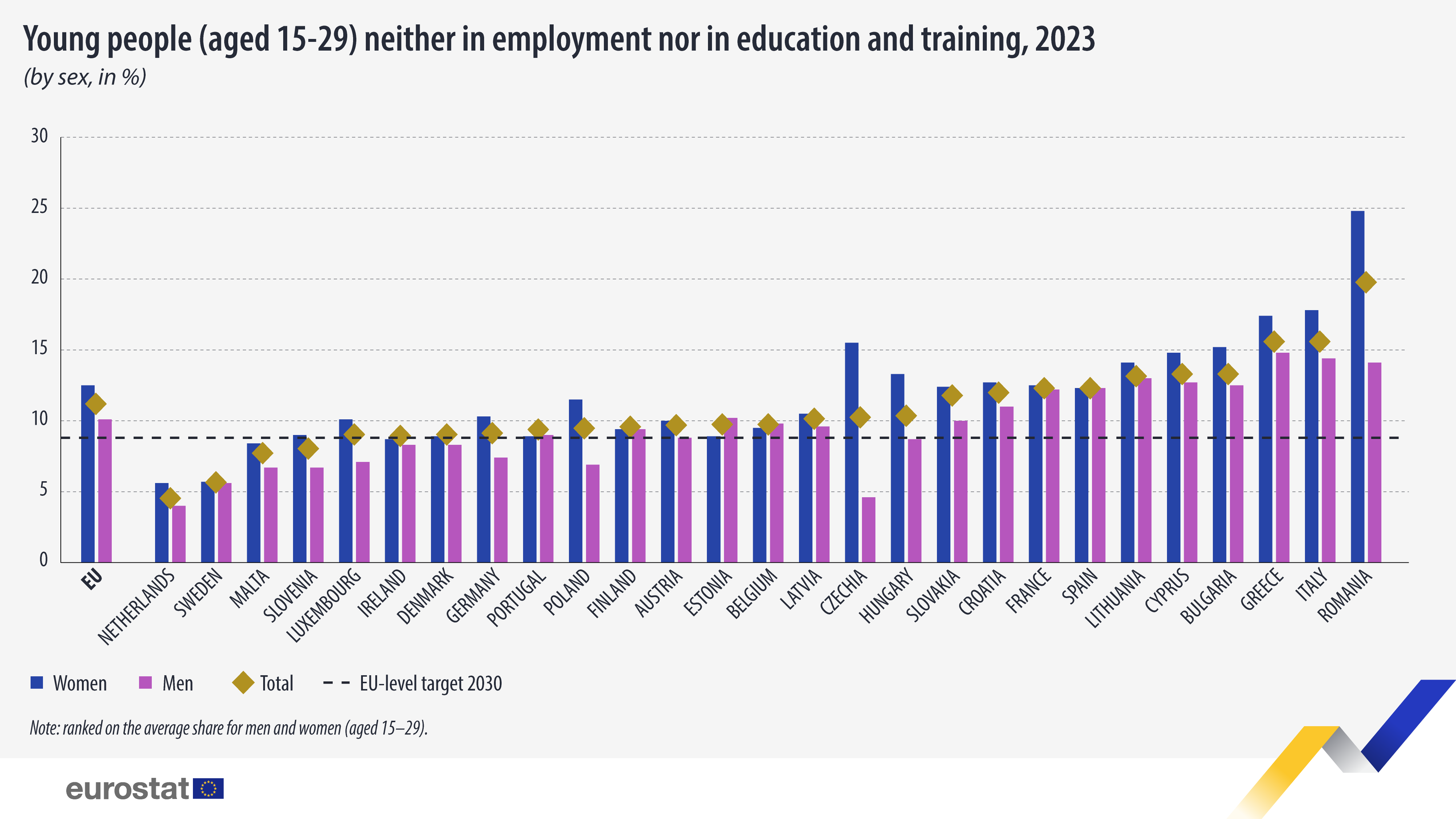Drop in youths neither working nor studying

In 2023, more than one in ten (11.2%) young people aged 15 to 29 in the EU were neither in employment nor in education or training (NEET), a decrease of 0.5 percentage points (pp) compared with 2022.
Over the last ten years, there was a noticeable decrease in the NEET rate among people aged 15 to 29. In 2013, the EU rate stood at 16.1% and it has decreased steadily since then, with the only exception being the COVID-affected 2020 when an increase was reported (from 12.6% in 2019 to 13.8% in 2020, followed by 13.1% in 2021).
Source dataset: edat_lfse_20
In 2023, NEET rates among young adults varied considerably across EU countries, ranging from 4.8% in the Netherlands to 19.3% in Romania.
Reducing this rate is one of the targets of the European Pillar of Social Rights. The goal is to lower the NEET rate of young people aged 15-29 to 9% by 2030.
Data show that, in 2023, a third of the EU countries were already below the 2030 target of 9%, namely the Netherlands (4.8%), Sweden (5.7%), Malta (7.5%), Slovenia (7.8%), Luxembourg (8.5%), Ireland (8.5%), Denmark (8.6%), Germany (8.8%) and Portugal (8.9%).
Source dataset: edat_lfse_20
In most EU countries, there were differences between the shares of NEET young women and young men. In 2023, 12.5% of young women aged 15–29 in the EU were NEET, while the corresponding share among young men was 10.1%.
The lowest NEET rates for young men and women were both in the Netherlands: 4.0% for young men and 5.6% for young women.
In contrast, the highest NEET rate for young men was recorded in Greece (14.8%), and the highest for women in Romania (24.8%).
The shares of NEET young women were lower than the associated share of men in Estonia (8.9% vs 10.2%) and Belgium (9.5% vs 9.8%), while Portugal, Spain, Finland and Sweden recorded roughly the same shares of NEET men and women.
For more information
- Statistics Explained article on young people neither in employment nor in education or training
- Thematic section on education and training
- Database on education and training
Methodological notes
- The indicator on young people neither in employment nor in education and training (NEET) corresponds to the percentage of the population of a given age group and sex who is not employed and not involved in further (formal or non-formal) education or training. It provides information on the transition from education to work and focuses on the number of young people who find themselves disengaged from both education and the labour market.
- Croatia and Slovenia – break in series for 2023 data.
- All countries – break in series for 2021 data.
If you have any queries, please visit our contact us page.


